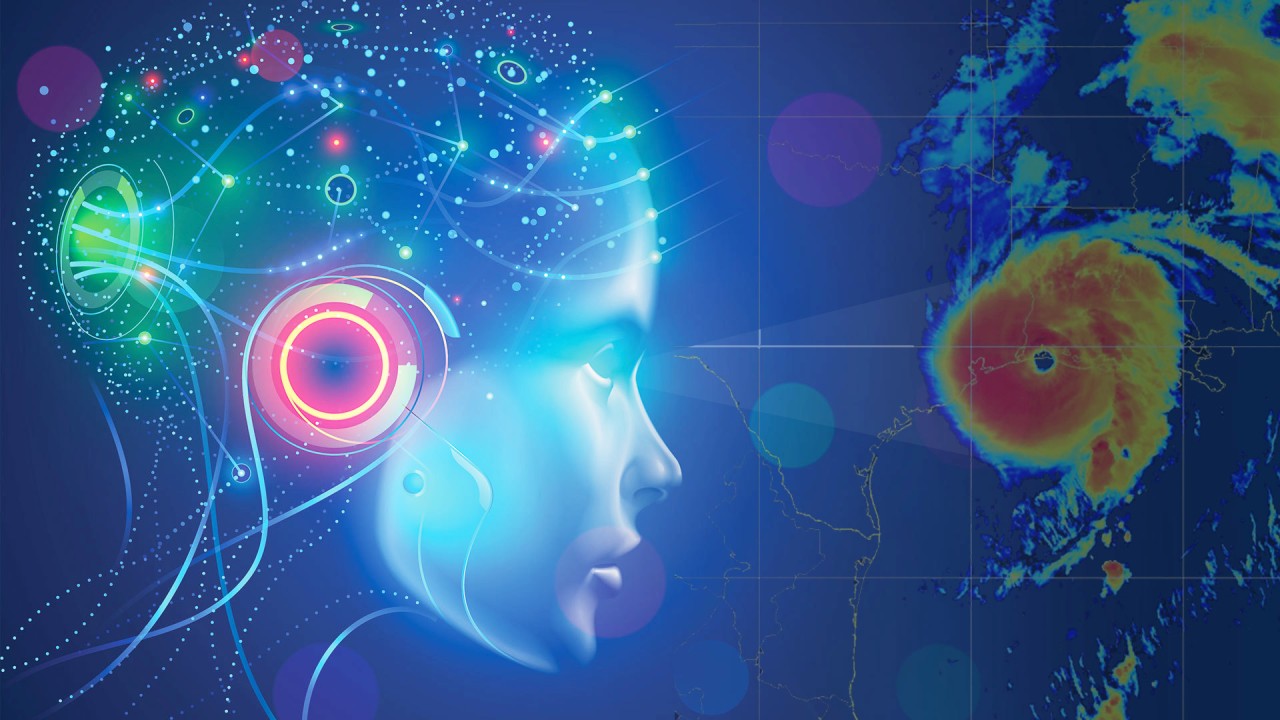 Imagine knowing exactly when to plan your outdoor wedding or when to evacuate before a hurricane hits. Thanks to the latest advancements in AI-driven weather forecasting, this level of precision is becoming a reality. In a world where climate change is making weather patterns increasingly unpredictable, artificial intelligence is emerging as a game-changer in the field of meteorology.
Imagine knowing exactly when to plan your outdoor wedding or when to evacuate before a hurricane hits. Thanks to the latest advancements in AI-driven weather forecasting, this level of precision is becoming a reality. In a world where climate change is making weather patterns increasingly unpredictable, artificial intelligence is emerging as a game-changer in the field of meteorology.
The Evolution of Weather Forecasting
For centuries, humans have tried to predict the weather. From ancient sky-watchers to modern meteorologists, we've always sought to understand the patterns of our atmosphere. Traditional forecasting methods, while improved over time, have had their limitations. They often struggle with the complexity of our changing climate and the sheer volume of data available.
Artificial Intelligence: A New Era of Forecasting
Artificial Intelligence, or AI, is ushering in a new era of weather prediction. But what exactly is AI, and how does it apply to weather forecasting?
Think of AI as a super-smart assistant that can analyze vast amounts of data faster than any human could. In weather forecasting, AI uses techniques like machine learning, deep learning, and neural networks to process information from millions of weather stations, satellites, and sensors in real-time.
Did You Know? AI weather models can process data from millions of weather stations, satellites, and sensors in real-time!
One exciting development in this field comes from Google DeepMind. Their latest AI weather forecasting model has shown remarkable accuracy, beating the leading providers more than 97% of the time. This breakthrough demonstrates the potential of AI to revolutionize weather prediction.
The Benefits of AI-Driven Weather Forecasting
- Improved Accuracy and Longer-Range Predictions - AI models can detect patterns and correlations that might be missed by traditional methods, leading to more accurate forecasts. They can also predict weather conditions further into the future with greater reliability.
- Handling Complex Climate Patterns and Extreme Weather Events - As our climate changes, weather patterns are becoming more erratic. AI excels at analyzing these complex systems, helping us better predict and prepare for extreme weather events.
- Personalized Weather Forecasts - AI can provide hyper-localized forecasts, tailoring predictions to specific locations and activities. Imagine getting a forecast for your exact street corner or favorite hiking trail!
AI Weather Forecasting in Action: Practical Applications
- Agriculture: Optimizing Crop Management Farmers can use AI-driven forecasts to make informed decisions about planting, irrigation, and harvesting. This precision can lead to improved crop yields and more efficient use of resources.
- Renewable Energy: Predicting Power Output For solar and wind energy providers, accurate weather predictions are crucial. AI forecasts can help these companies optimize their operations and better integrate with the power grid.
- Disaster Preparedness: Early Warning Systems AI models can detect the early signs of severe weather events, giving communities more time to prepare and potentially saving lives.
- Transportation: Enhancing Safety and Efficiency Airlines and shipping companies can use AI forecasts to plan safer, more efficient routes, reducing fuel consumption and improving safety.
Challenges and Ethical Considerations
While AI-driven weather forecasting offers tremendous benefits, it's not without challenges:
- Data Quality and Availability - AI models are only as good as the data they're trained on. Ensuring high-quality, comprehensive data from around the globe is crucial.
- Balancing AI Predictions with Human Expertise - While AI can process vast amounts of data, human meteorologists still play a vital role in interpreting results and making final judgments.
- Ensuring Equitable Access - There's a risk that advanced AI forecasting tools could be available only to wealthy nations or corporations. Efforts must be made to democratize access to these technologies.
The Future of AI in Weather Forecasting
The field of AI-driven weather forecasting is evolving rapidly. In January 2024, the European Centre for Medium-Range Weather Forecasts (ECMWF) introduced a new version of their AI forecasting system with improved resolution, reducing grid spacing from 111 km to just 28 km. This increased precision allows for more accurate local forecasts.
Looking ahead, we can expect to see:
- Even more precise and localized forecasts
- Better integration of AI forecasts with climate change models
- Increased use of citizen science and crowdsourced weather data
Conclusion
AI-driven weather forecasting is not just improving our ability to predict the weather; it's transforming how we understand and interact with our changing climate. From helping farmers optimize their crops to providing early warnings for natural disasters, this technology has the potential to save lives, improve economic outcomes, and help us adapt to a changing world.
As we face the challenges of climate change, continued innovation in weather forecasting technology will be crucial. By combining the power of AI with human expertise, we can create a more resilient and prepared global community.
 Imagine knowing exactly when to plan your outdoor wedding or when to evacuate before a hurricane hits. Thanks to the latest advancements in AI-driven weather forecasting, this level of precision is becoming a reality. In a world where climate change is making weather patterns increasingly unpredictable, artificial intelligence is emerging as a game-changer in the field of meteorology.
Imagine knowing exactly when to plan your outdoor wedding or when to evacuate before a hurricane hits. Thanks to the latest advancements in AI-driven weather forecasting, this level of precision is becoming a reality. In a world where climate change is making weather patterns increasingly unpredictable, artificial intelligence is emerging as a game-changer in the field of meteorology.